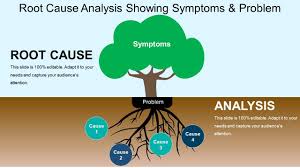NURS-FPX4020 Assessment 2 Root-Cause Analysis and Safety Improvement Plan Example
Patient falls are a global healthcare problem that contributes to poor patient outcomes, increased hospital stays, and increased admission rates. According to Keuseman and Miller (2020), an estimated 40% of all hospital accidents are attributed to patient falls.
Furthermore, it is the second most common cause of prolonged hospital stay after adverse drug events and contributes to increased hospital expenditure, therefore becoming a healthcare burden. Consequently, it is prudent for healthcare set-ups to develop evidence-based interventions to reduce falls and limit their adverse effects. Fortunately, root cause analysis (RCA) offers an opportunity to address healthcare issues and come find solutions.
According to Paulsen. (2021), RCA is an evidenced-based tool that uses a systematic approach of incorporating principles, procedures, and methodologies to identify the root cause of the problem and look for solutions to prevent such errors from occurring in the future. While assessing the cause, RCA tries to identify the risks, the steps missed, what could have been done differently, and why the incident occurred.
Therefore, RCA helps optimize care and improve patient outcomes when used in healthcare. Regarding patient falls, this paper will discuss the root cause analysis, evidenced-based practices, safety improvement plans, and existing organizational resources to prevent falls and improve patient safety.
Analysis of the Root Cause
Root cause analysis uses a systematic approach. The initial step of RCA is problem identification and multidisciplinary team members are concerned with the problem. Patient falls are a healthcare concern with several contributions classified as internal or external causes.
Interna causes are those related to patient factors. Such include increasing age above 65 years, visual impairment, urinary incontinence, dizziness, delirium, certain medications, and previous history of falls. According to Keuseman and Miller (2020), fall risks increase in elderly patients taking medications such as benzodiazepines, psychotropics, and sedatives. These medications cause drowsiness, agitation, confusion, and anxiety, which increases the risk of falls in elderly patients who are essentially unstable or have gait disturbances.
Conversely, extrinsic factors are related to the environmental risks that cause falls. They include poor lighting systems, overcrowding, slippery floors, negligence by healthcare providers, absence of cradles, poor communication, nursing shortage, lack of fall response system, and lack of support from relatives. Furthermore, LeLaurin and Shorr (2019) argue that despite bedside bells being useful in preventing falls, they may contribute to falls.
They state that inappropriate use of bells could lead to agitation, anxiety, confusion, and an increased risk of falls. Therefore, patients and relatives must be educated before using it; otherwise, serious falls may be reported. Nonetheless, the failure of healthcare providers to identify at-risk populations also increases the risk of falls among hospitalized patients. Consequently, patient falls negatively affect patient outcomes.
For instance, patient falls contribute to fractures, dislocation, a complication of other chronic conditions, and other injuries. Therefore, it leads to increased hospitalization, which leads to increased hospital expenditures. Furthermore, patient satisfaction is compromised, making them seek legal options for compensation in case of negligence. Therefore, it is prudent to implementation of interventions aimed at reducing falls.
Application of Evidence-Based Strategies to Prevent Patient Falls.

Several levels of evidence-based practice have been deployed in various set-ups to prevent patient falls. One of the most common causes of patient falls is due to negligence. Therefore, my institution has been at the forefront of offering education to healthcare providers about their roles and how they can prevent falls.
The education aims at enlightening caregivers about the risks, prevention strategies, and complications of falls. The use of a risk assessment tool for all patients is the easiest and safest way of classifying patients (Stoeckle et al., 2019). For those at high risk, extra activities are performed. These include hourly rounding, close monitoring, placing them in